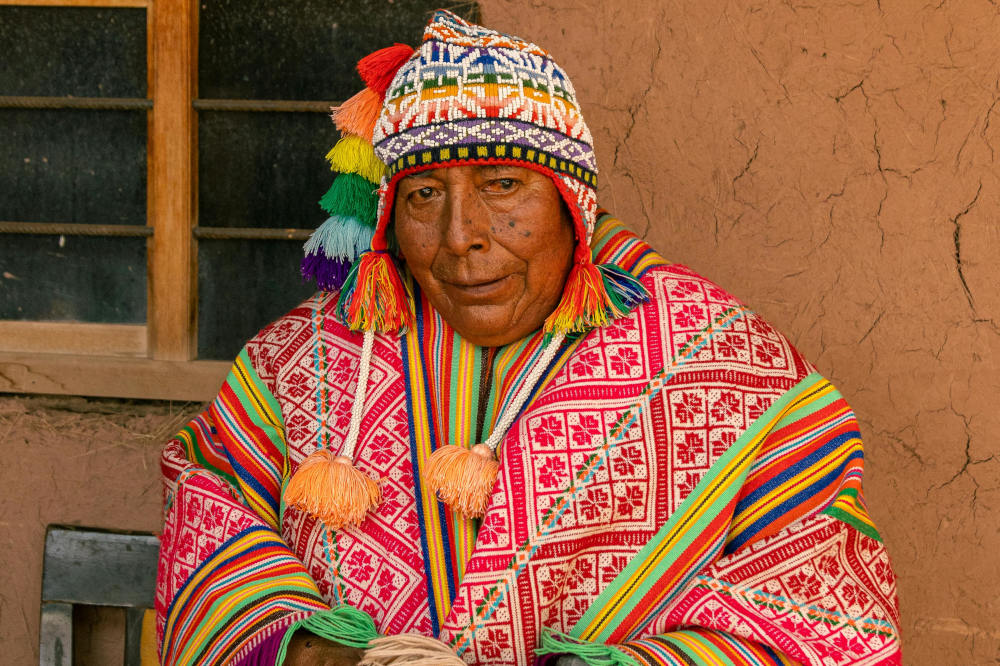
Shamans have existed for thousands of years across nearly every continent and culture. As spiritual healers, visionaries, and intermediaries between the physical and spiritual worlds, shamans play an essential role in the health and harmony of their communities. But how does one become a shaman? Are shamans born, chosen, or trained?
The answer depends on the cultural context—but in nearly all traditions, becoming a shaman isn’t a matter of choice. Shamans are often called, not by people, but by spirits, ancestors, or nature itself. This article explores how shamans are traditionally chosen, the signs and experiences that mark them, and how modern interpretations compare with ancient ones.
Panaprium is independent and reader supported. If you buy something through our link, we may earn a commission. If you can, please support us on a monthly basis. It takes less than a minute to set up, and you will be making a big impact every single month. Thank you!
What Is a Shaman?
Before diving into how shamans are chosen, it's essential to understand what a shaman is. The term "shaman" originates from the Tungusic people of Siberia but has come to refer broadly to spiritual practitioners in indigenous traditions who:
-
Communicate with spirits and ancestors
-
Enter altered states of consciousness or trance
-
Heal physical, emotional, or spiritual illness
-
Guide souls and perform rituals for balance and harmony
Shamans are not merely healers; they are considered bridges between the seen and unseen worlds.
Are Shamans Born or Made?
Across cultures, there are generally three ways shamans are chosen:
1. By Inheritance (Shamanic Lineage)
In some cultures, shamanic abilities are passed down through family lines. A child of a shaman might be expected to carry on the role, often showing early signs of sensitivity or psychic ability.
Examples:
-
Siberia: Many Siberian tribes believe shamanic power is passed through bloodlines, often skipping generations.
-
Native American Tribes: Some tribes, like the Lakota, hold that medicine men or women are born into spiritual roles.
2. By a Spiritual Calling (Shamanic Initiation by Spirits)
In many traditions, people become shamans not by birth but because they are "called" by spirits or ancestors. This often happens through a powerful spiritual experience, dream, or illness.
Examples:
-
Mongolia: Shamans often describe dreams in which spirits visit and demand they become a healer. Refusing can lead to misfortune.
-
South America: Ayahuasca shamans often report being taught by plant spirits during visionary states.
3. By a Shamanic Illness or Crisis
One of the most common paths to becoming a shaman is through a life-threatening illness, accident, or mental breakdown known as the “shamanic illness.” This ordeal is seen not as a punishment but as a transformation.
Examples:
-
Siberian Yakuts: A future shaman may experience fever, visions, or seizures—seen as signs they’re being trained by the spirit world.
-
West African tribes: A sudden spiritual illness, like hearing voices or seeing spirits, is often interpreted as a call to become a healer.
The Shamanic Calling: Signs and Symptoms
While the specifics vary, many future shamans exhibit similar signs:
1. Spiritual Dreams or Visions
They may dream of spirits, animals, or ancestors who guide or speak to them. In some cultures, these dreams are considered the primary initiation.
2. Near-Death Experiences
Many shamans report surviving deadly accidents, illnesses, or disasters. The experience is seen as a symbolic death and rebirth.
3. Extreme Sensitivity
Many shamans feel things others don't. They are often emotionally intense, spiritually attuned, and deeply connected to nature.
4. Outsider or “Wounded Healer” Archetype
Shamans often feel like outcasts early in life. Their personal struggles—mental illness, trauma, or isolation—become fuel for empathy and healing.
5. Strange Experiences in Childhood
Seeing spirits, talking to animals, or spontaneously entering trance states are common among those later recognized as shamans.
Initiation: From Chosen to Trained
Once chosen, the path of the shaman involves initiation—a period of intense training that includes:
-
Learning to journey between worlds
-
Mastering rituals and chants
-
Communing with spirit allies or power animals
-
Learning to diagnose and heal illness
-
Understanding sacred plants, tools, and symbols
In traditional societies, this training is guided by elder shamans and may last for years. A young initiate is often taken under the wing of a mentor and taught through oral tradition, ceremony, and lived experience.
In cultures like the Shipibo-Conibo of the Amazon, for example, young shamans undergo long periods of dietas—strict isolation, fasting, and consumption of specific plants to receive teachings directly from the spirit world.
The Role of the Community
In most indigenous cultures, a shaman is not self-appointed. The community must recognize and validate the shaman’s abilities. Without community support, the individual’s gifts may be dismissed—or the person may be seen as mentally ill or cursed.
This is one of the main differences between traditional and modern interpretations of shamanism. In many modern societies, people may feel called to shamanism but lack a traditional framework or community to guide and support their path.
Modern-Day Shamans and Neo-Shamanism
Today, many people in the West identify as shamans or practice “neo-shamanism.” While some have trained with indigenous teachers or in spiritual schools, others are self-taught through workshops, books, or personal experience.
This raises questions: Can someone become a shaman without being born into a tribe? Does personal trauma or spiritual awakening qualify someone?
Critics argue that:
-
Many modern “shamans” lack the deep training or cultural context of traditional healers.
-
Some practices risk cultural appropriation or superficial understanding.
Supporters argue that:
-
Spiritual callings are universal and not limited to one culture.
-
Healing, vision, and connection with spirit can be accessible to anyone with sincerity and respect.
Ultimately, whether modern shamans are “real” depends on your definition—and whether the individual practices with humility, discipline, and a commitment to service.
Examples From Around the World
Siberia
In many Siberian tribes, the call to shamanism involves a terrifying visionary journey where the future shaman is dismembered and rebuilt by spirits—symbolizing rebirth. If the person refuses the calling, they may become seriously ill or die.
Peru and the Amazon
In the Amazon, plant spirits are considered the true teachers. Shamans must follow rigorous diets, abstain from sex and salt, and enter altered states through ayahuasca or other teacher plants. These initiations are seen as spiritual tests.
Mongolia
Mongolian shamans often begin their training after experiencing strange dreams, depression, or illness. They’re usually guided by a mentor and go through powerful initiations where they learn to channel ancestral spirits and perform rituals.
Africa
In South Africa, a person who shows signs of being spiritually gifted may undergo ukuthwasa—a formal initiation process to become a sangoma (traditional healer). This process includes dreams, ritual cleansing, trance dancing, and training under a mentor.
Common Threads Across Traditions
Despite cultural differences, several patterns emerge in how shamans are chosen:
-
The Call Is Not Chosen: Shamans rarely choose the path—it chooses them.
-
Initiation Is a Rite of Death and Rebirth: Symbolic or literal illness, crisis, or dismemberment leads to transformation.
-
Healing Others Requires Personal Healing: Shamans often emerge from personal pain or crisis with gifts of empathy and insight.
-
Training Is Essential: The call is only the beginning. True shamanic ability requires years of learning, discipline, and practice.
-
Service to the Community Is Central: Shamans exist to help others, not elevate themselves.
Conclusion: Are Shamans Chosen or Made?
Shamans are both chosen and made. They are often selected by spirit or destiny through visions, crises, or ancestral calling—but they must also undergo rigorous training and earn the respect of their communities.
In today’s world, where traditional cultures are fading and spiritual seekers are rising, the essence of shamanism remains: to walk between worlds, to heal what is broken, and to serve the soul of the people.
If you feel drawn to the shamanic path, the question is not just “Am I chosen?” but also “Am I willing to walk the path with humility, discipline, and service?”
Sources and Further Reading:
-
Mircea Eliade, Shamanism: Archaic Techniques of Ecstasy
-
Michael Harner, The Way of the Shaman
-
Angeles Arrien, The Four-Fold Way
-
Eduardo Luna, Vegetalismo
-
National Geographic reports on Mongolian shamans and Amazonian traditions
-
Interviews with indigenous shamans from Peru, Mongolia, and Africa
Was this article helpful to you? Please tell us what you liked or didn't like in the comments below.
About the Author: Alex Assoune
What We're Up Against
Multinational corporations overproducing cheap products in the poorest countries.
Huge factories with sweatshop-like conditions underpaying workers.
Media conglomerates promoting unethical, unsustainable products.
Bad actors encouraging overconsumption through oblivious behavior.
- - - -
Thankfully, we've got our supporters, including you.
Panaprium is funded by readers like you who want to join us in our mission to make the world entirely sustainable.
If you can, please support us on a monthly basis. It takes less than a minute to set up, and you will be making a big impact every single month. Thank you.































0 comments